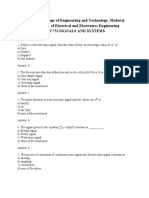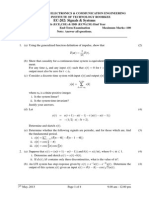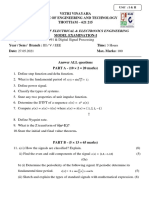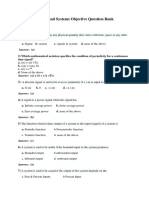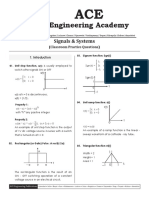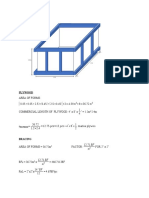0% found this document useful (0 votes)
258 views3 pagesDigital Communication Using GNU Radio - Unit 3 - Week 0
The document is a quiz for Week 0 of the NPTEL course "Digital Communication using GNU Radio". It contains 10 multiple choice questions about signals and systems topics like causality, linearity/time-invariance, impulse responses, Fourier transforms, sampling, and Fourier series coefficients. The questions cover topics like which signals are causal, properties of linear/time-invariant systems, characteristics of impulse responses, valid Fourier transform pairs, the Nyquist sampling criterion, and Fourier series coefficients of periodic signals.
Uploaded by
rensiCopyright
© © All Rights Reserved
We take content rights seriously. If you suspect this is your content, claim it here.
Available Formats
Download as PDF, TXT or read online on Scribd
0% found this document useful (0 votes)
258 views3 pagesDigital Communication Using GNU Radio - Unit 3 - Week 0
The document is a quiz for Week 0 of the NPTEL course "Digital Communication using GNU Radio". It contains 10 multiple choice questions about signals and systems topics like causality, linearity/time-invariance, impulse responses, Fourier transforms, sampling, and Fourier series coefficients. The questions cover topics like which signals are causal, properties of linear/time-invariant systems, characteristics of impulse responses, valid Fourier transform pairs, the Nyquist sampling criterion, and Fourier series coefficients of periodic signals.
Uploaded by
rensiCopyright
© © All Rights Reserved
We take content rights seriously. If you suspect this is your content, claim it here.
Available Formats
Download as PDF, TXT or read online on Scribd
/ 3

















